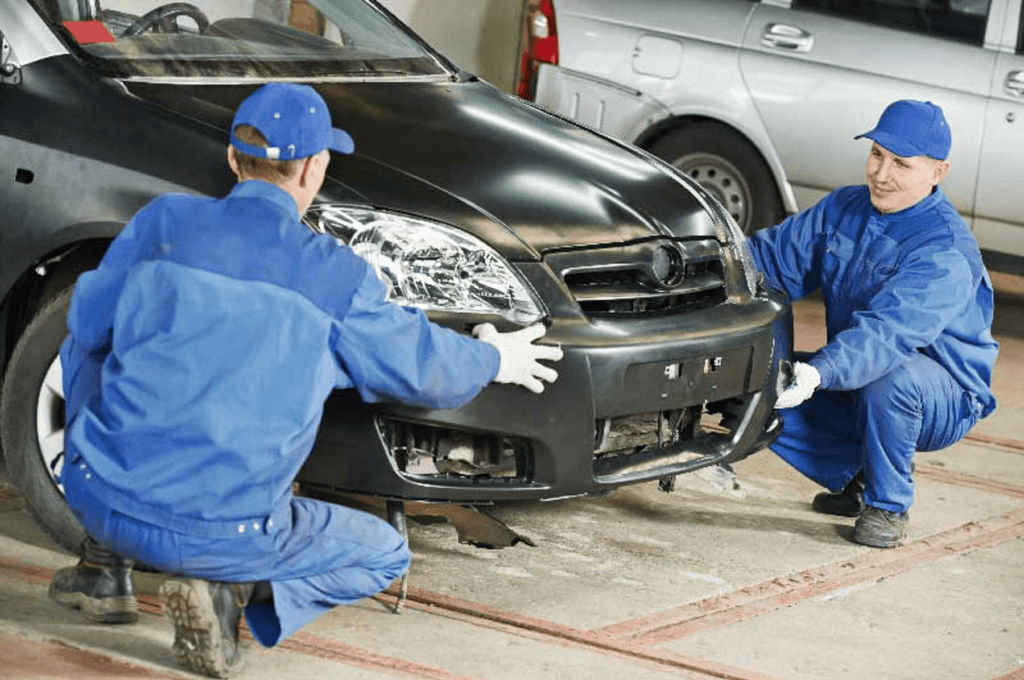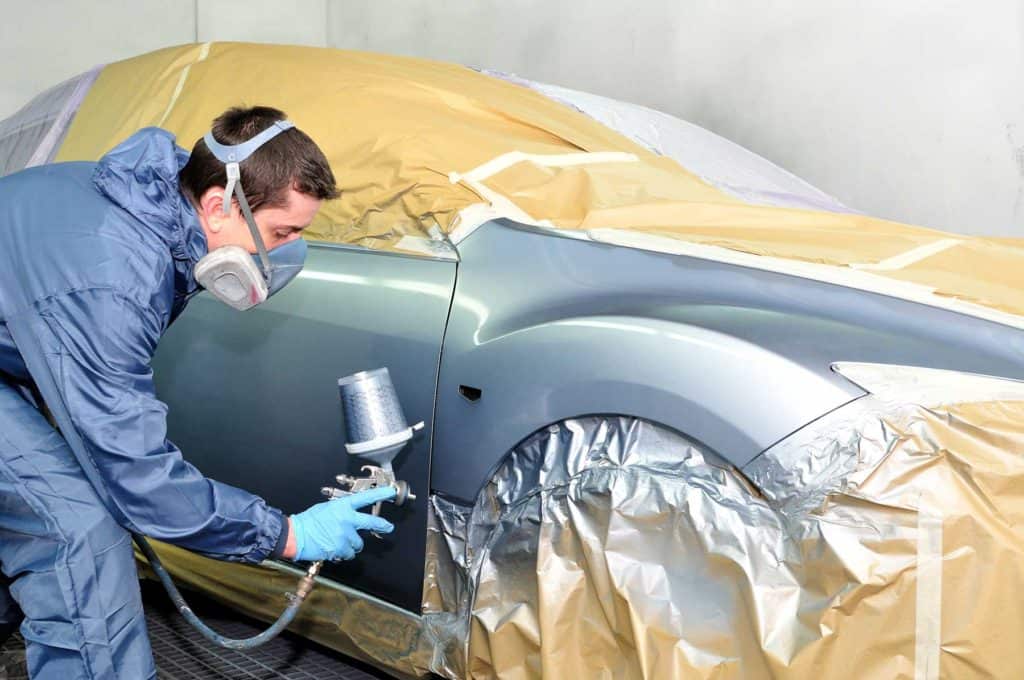Shiny, vibrant car paint is not just aesthetically pleasing, but it also protects your vehicle from the elements. But what happens when that protective coat begins to fade and oxidize? Don’t fret. This guide provides a comprehensive look at how to restore car paint to its original showroom shine.
Key Takeaways
- Understanding and identifying paint oxidation levels on your car is critical for choosing the correct restoration method, with light oxidation being less severe compared to the dull, chalky texture of heavily oxidized paint requiring more aggressive techniques.
- Proper preparation is key for paint restoration, including thorough cleaning, decontamination using clay bars, and employing suitable washing techniques to set the stage for effective paint correction and protection.
- Using the right products and tools, including cutting compounds and finishing polishes, in combination with machine polishing, can restore the paint to showroom quality, which should then be protected with long-lasting sealants and maintained through regular washing and waxing.
Understanding Paint Oxidation and Fading
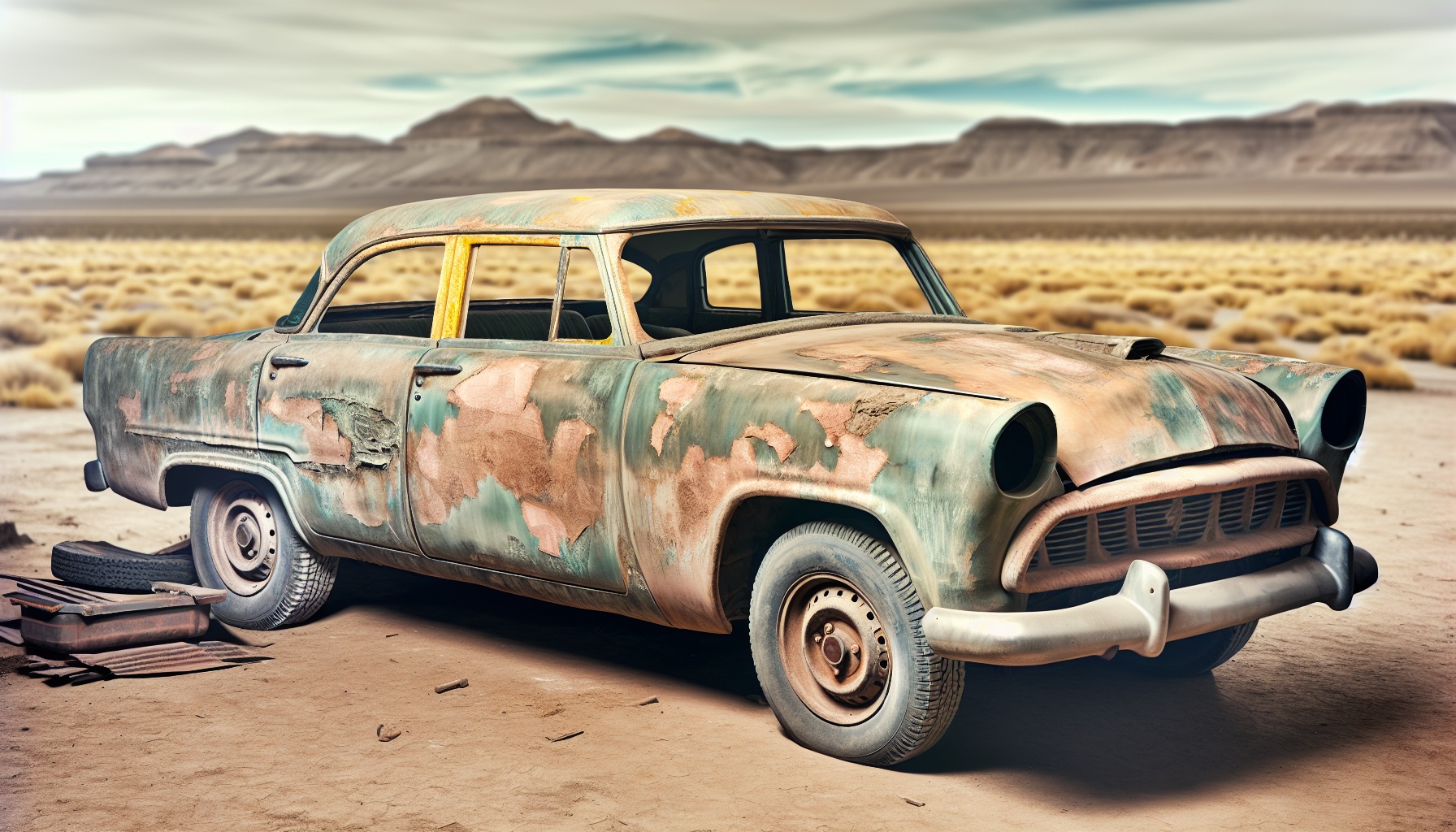
Understanding the causes and effects of paint oxidation and fading is a prerequisite for effective restoration of your car’s paint. Paint oxidation refers to the deterioration of paint caused by exposure to elements such as UV radiation from the sun, environmental pollutants, and harsh weather conditions. This can lead to faded paint and, in severe cases, compromise the clear coat, exposing the underlying paint, and potentially leading to rust.
Identifying Heavily Oxidized Paint
Heavily oxidized paint can be identified by its dull appearance, chalky texture, and rough feel to the touch. Signs of irreversible oxidation include a lacklustre appearance, textural changes, and fine scratches, which may require more aggressive restoration techniques or spray painting to rectify.
The Impact of Light Oxidation on Your Car’s Paint
On the other hand, light oxidation, caused by exposure to oxygen, heat, and ultraviolet rays, can result in minor swirl marks and a decrease in gloss, giving the car paint an aged, worn, and dull look with a chalky or milky appearance.
Preparing for Restoration: Cleaning and Decontaminating
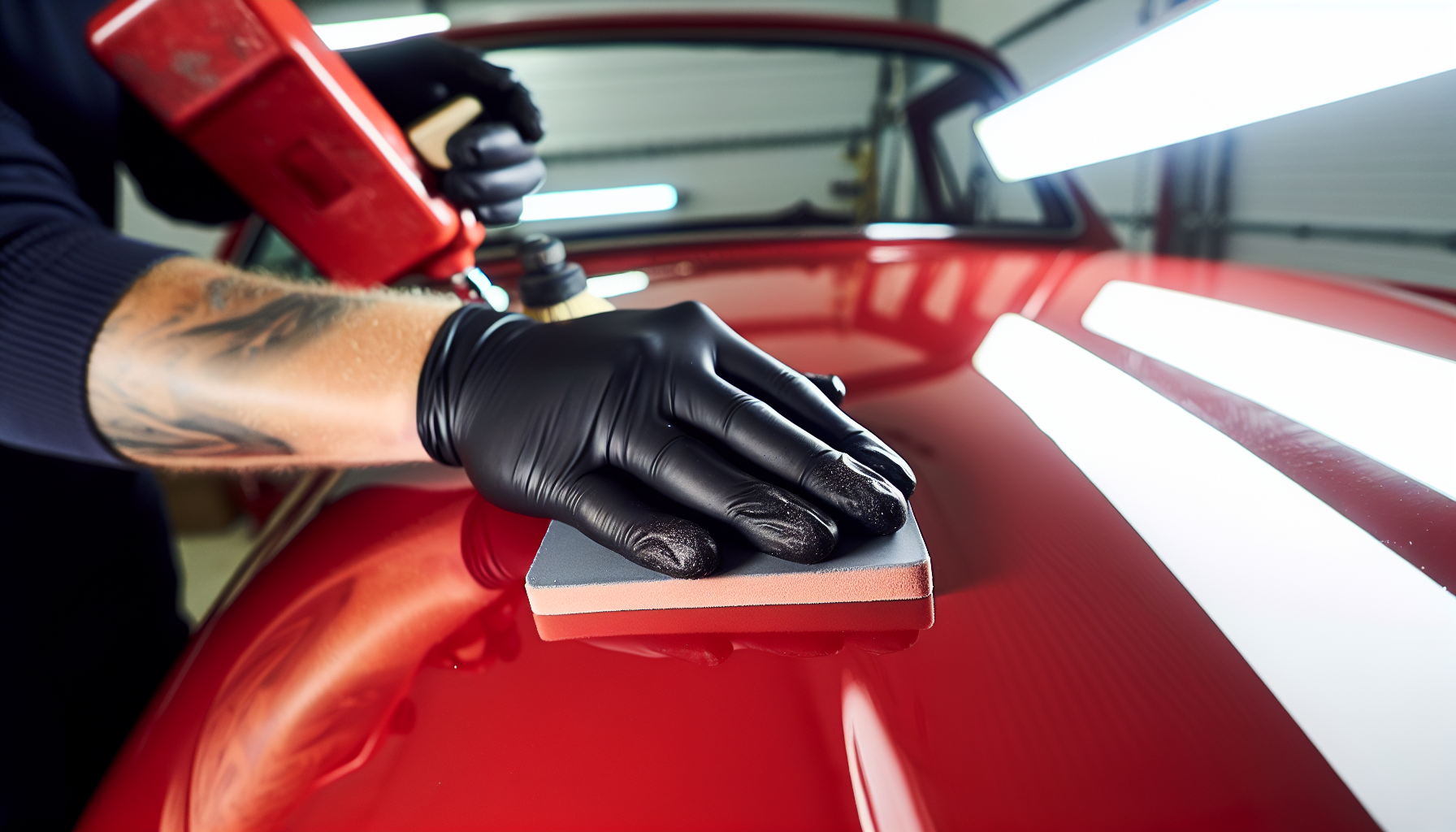
Prior to initiating the restoration process, a thorough washing of your vehicle is required to eliminate contaminants like dirt, grime, and industrial pollution. This step is key, as it not only assists in restoring the shine and smoothness of the paint but also safeguards against premature ageing and wear.
The Role of Clay Bars in Restoring Car Paint
An integral part of this process is the use of a clay bar, which efficiently removes dead paint and contamination, thus preparing the surface for polishing and restoration of faded and oxidized paint.
Washing Techniques for Optimal Paint Correction
Using a gentle soap, such as Dawn dish soap, can help remove dirt and grime. However, it is harsher on the paint and should not be used frequently.
High-quality car wash soap for a regular wash, application of snow foam, and possibly chemical decontamination are all recommended techniques for preparing a car for paint correction.
Selecting the Right Products and Tools
Choosing appropriate products and tools for paint restoration is a vital step towards attaining the desired outcomes. Cutting compounds, for instance, serve as an abrasive material utilized for the restoration and repair of paint. They aid in the elimination of scratches, oxidation, and other flaws from the paint surface. Brands such as:
- Chemical Guys
- 3D
- Meguiar’s
- Turtle Wax
come highly recommended, particularly for addressing severe oxidation.
Cutting Compounds for Severe Cases
For severe cases, compounds like Meguiar’s M105 Mirror Glaze Ultra-Cut Compound can be very effective. They function by eliminating the damaged portion of oxidized paint in order to reveal a renewed paint surface.
Finishing Polishes for a Factory Finish
After the use of cutting compounds, a finishing polish is applied to eliminate swirl marks caused by the buffer, resulting in a heightened shine and a professional factory-finish appearance.
Products like Klasse All-In-One are highly recommended for this purpose.
Step-by-Step Guide to Machine Polishing
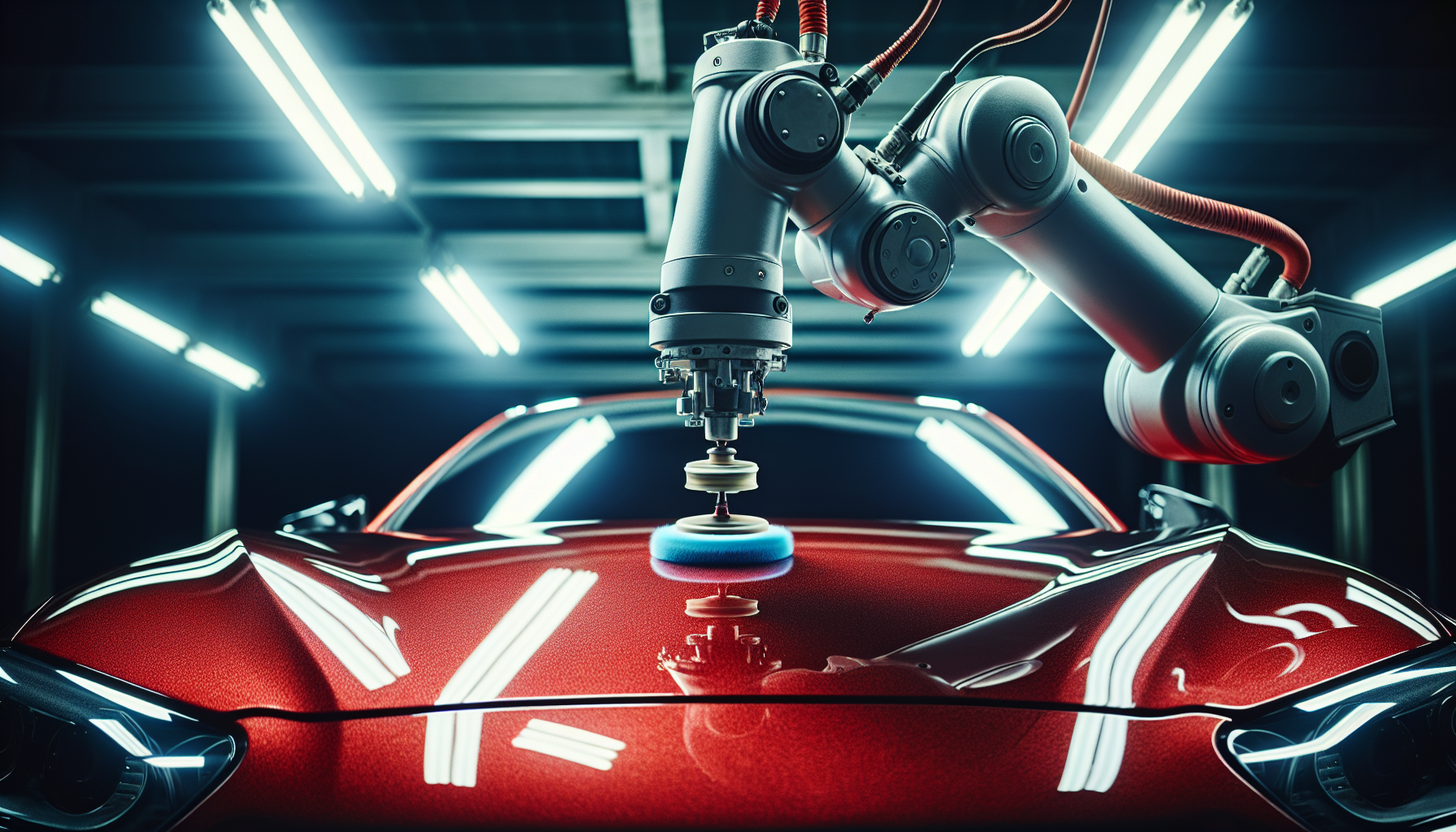
Equipped with a clear understanding of the products to use, we now proceed to discuss the actual polishing process.
Paint correction is a meticulous process aimed at revitalizing car paintwork, especially after crash repairs, by using buffers to eliminate scratches and swirl marks in the car paint.
Machine vs Hand Polishing: When to Use Each
While hand polishing is a viable option, it is not as efficient or capable of delivering optimal results as machine buffing. Machine polishing offers a faster and more effective solution for safely eliminating swirl marks on car paint.
However, when dealing with delicate areas such as plastic bumper caps and mirrors, it is advisable to use hand polishing with finishing polish to minimize the risk of damage.
Protecting and Sealing the Restored Paint
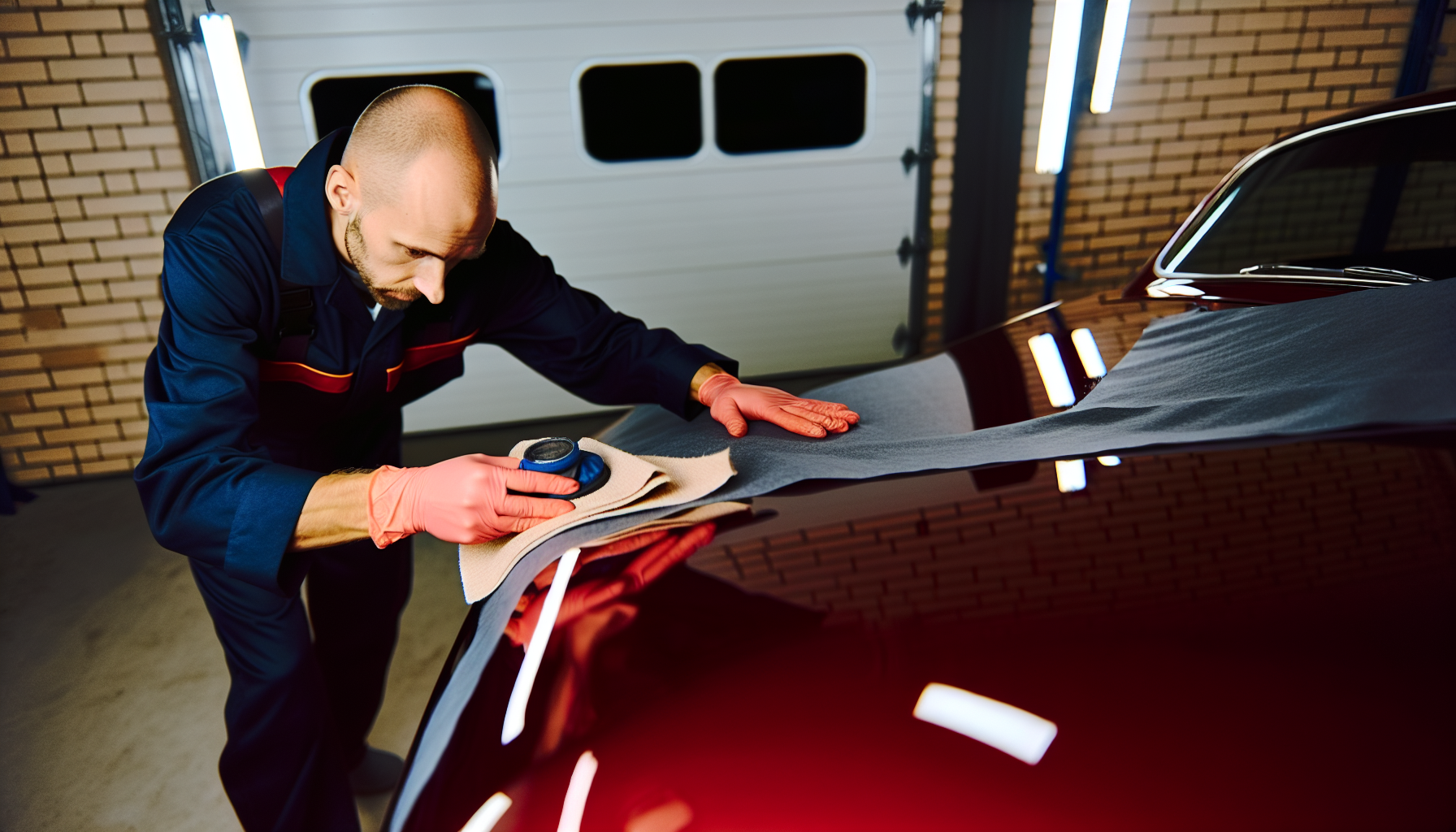
Upon successful restoration of your car’s paint to its original lustre, the subsequent step involves the preservation of this condition. Shielding and sealing the restored paint is necessary to maintain its gloss and prevent future oxidation. Paint sealants function as a safeguarding shield against UV rays, water damage, and oxidation, offering a more robust level of paint protection in comparison to wax, with a longevity of 6-12 months.
Choosing the Right Paint Sealant for Long-Term Protection
Among the various options available, Klasse High Gloss Sealant Glaze is an excellent choice. This product provides:
- Enhanced protection against environmental elements and ultraviolet rays
- A resilient and lustrous finish
- The ability to apply multiple coats for exceptional durability.
Maintaining Your Vehicle’s Shine Post-Restoration
Preserving your vehicle’s shine post-restoration holds as much importance as the restoration process in itself. Regular upkeep activities like washing and waxing are of utmost importance. It is recommended to wash and wax a restored vehicle at least twice a year, with intervals ranging from every 3 to 6 months. For classic cars, some experts advise waxing every 6-8 weeks.
To protect your car from the elements when it’s not in use, consider using an outdoor car cover made of sturdy materials like polyester or cloth, specifically treated to block moisture and UV rays.
Introducing Coconut Grove Panel & Paint (CGPP)
In Darwin, NT, one of the best places to have your vehicle body painted is at Coconut Grove Panel & Paint (CGPP). This locally owned auto body repair centre is known for its quality work, professional team, and quick quotes.
Whether you’re dealing with a single vehicle or a fleet, CGPP is equipped to deliver flawless results, including fleet repairs.
Summary
In conclusion, restoring your car’s paint to its original showroom shine is a meticulous process that involves understanding paint oxidation and fading, preparing the car for restoration, selecting the right products and tools, executing the polishing process, and finally protecting and sealing the restored paint. Regular maintenance post-restoration is crucial for maintaining your vehicle’s shine and preventing future oxidation. Trusting professionals like the team at CGPP can also ensure the highest standard of workmanship.
Frequently Asked Questions
Can you restore the paint on a car?
If the paint is too faded or damaged for buffing to work, the only solution may be to refinish the vehicle. Sanding with 1,000-3,000 grit can remove light scratches, followed by machine polishing.
Does WD40 restore car paint?
No, WD40 is not recommended for restoring car paint as it is primarily used for removing scratches by breaking down pathways created on clear coat finishes. Using it for car paint restoration may not yield the desired results.
What causes paint oxidation and fading?
Paint oxidation and fading in car paintwork are primarily caused by UV radiation from the sun, environmental pollutants, and harsh weather conditions. These factors contribute to the deterioration of the paint over time.
What is the role of clay bars in restoring car paint?
Clay bars are essential for removing dead paint and contamination, preparing the surface for polishing and restoring faded and oxidized paint. This process helps to achieve a smooth and glossy finish for your car.
What is the difference between a cutting compound and a finishing polish?
A cutting compound is used to remove pronounced scratches, while a finishing polish enhances paint and achieves a glossy finish. Choose the appropriate product based on the level of imperfections you need to address.


